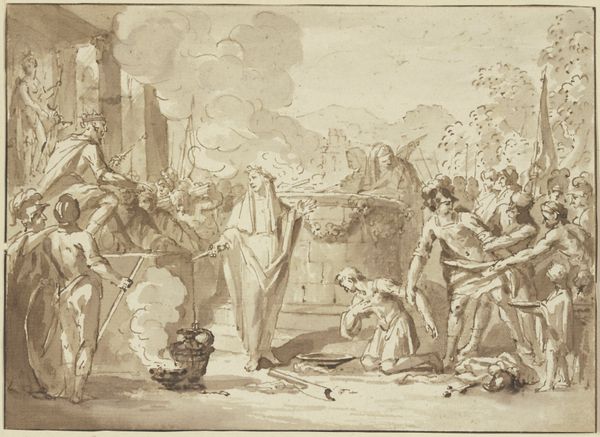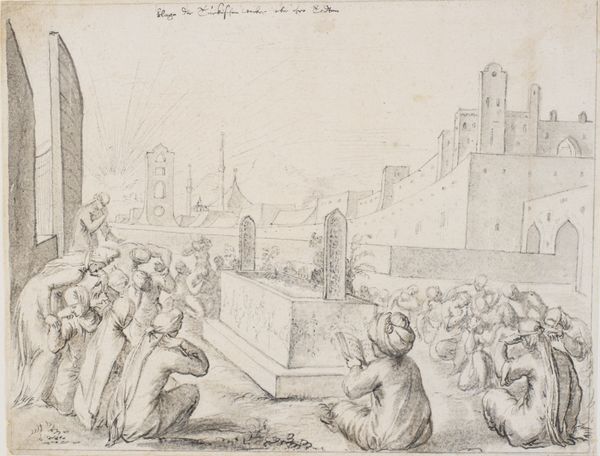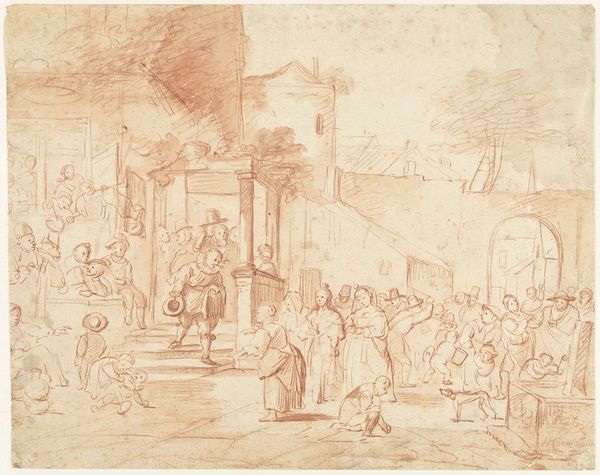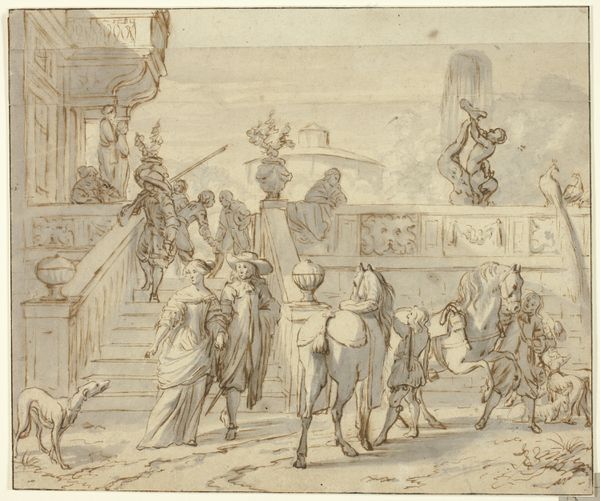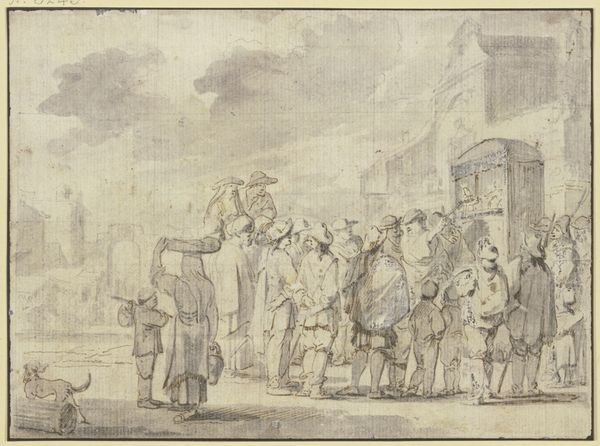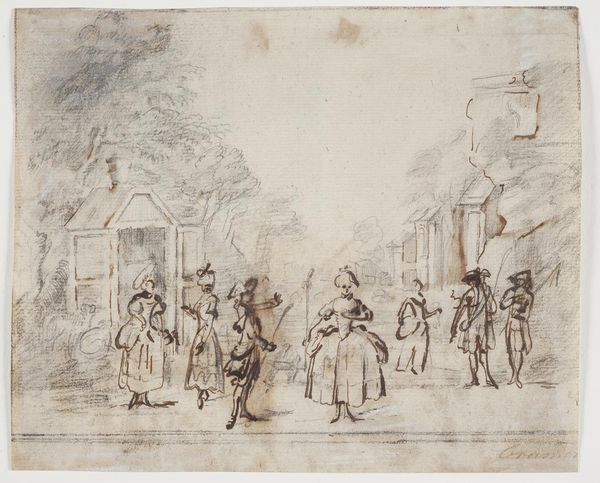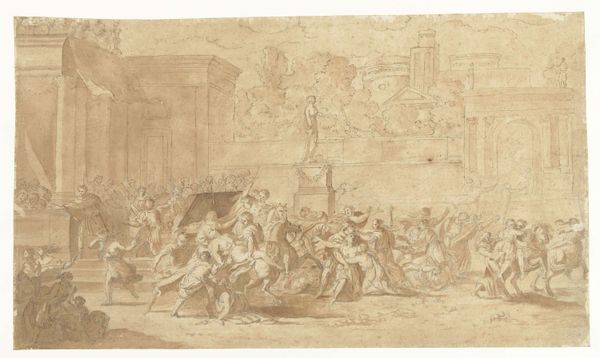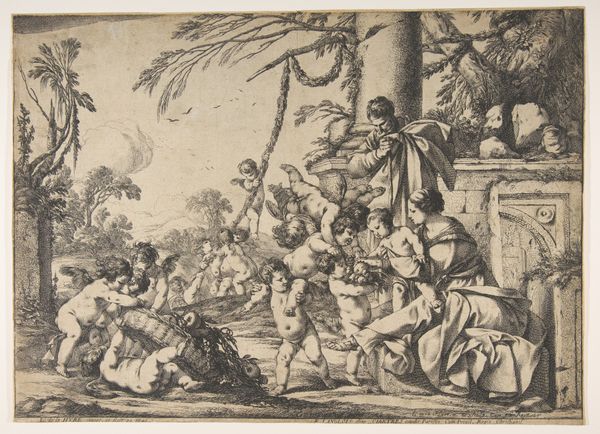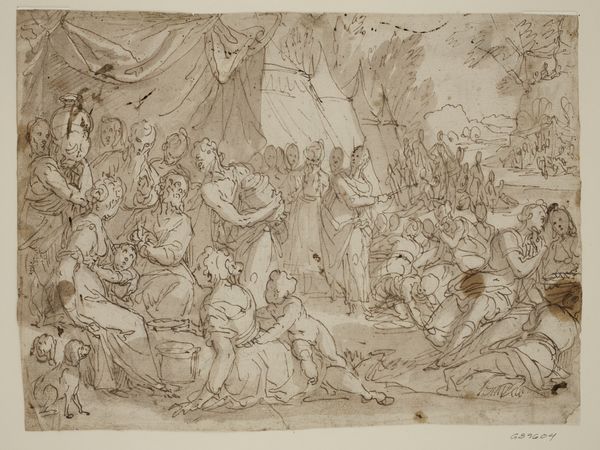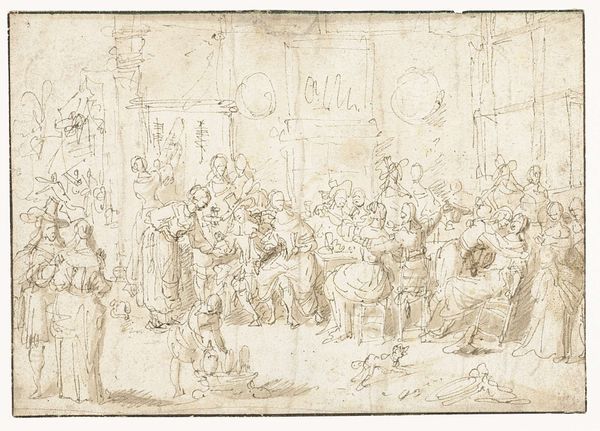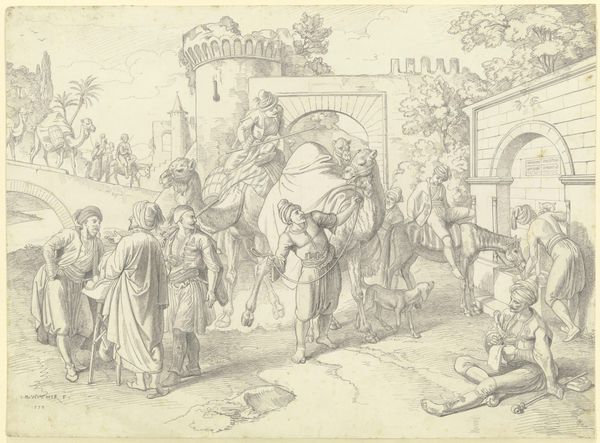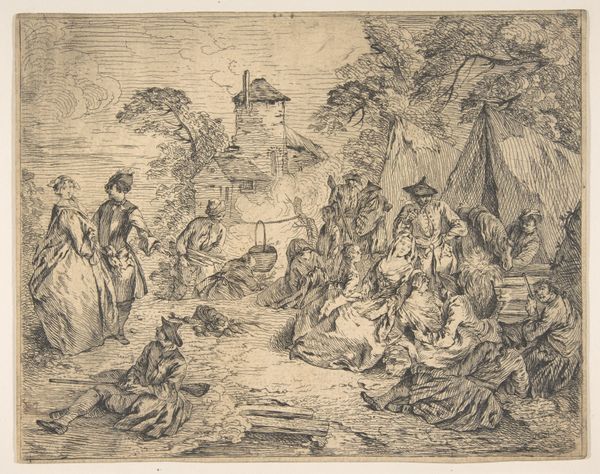
drawing, red-chalk, chalk
#
drawing
#
narrative-art
#
baroque
#
red-chalk
#
figuration
#
chalk
#
history-painting
Copyright: Public Domain
Curator: Here we have a red chalk drawing titled "Empfang Helenas in Troja," or "The Reception of Helen in Troy," created by Arnold Houbraken. Editor: What immediately strikes me is the incredible bustle and theatricality, even in a medium as subtle as chalk. It feels like a stage set. Look at that enormous ship in the background, vying for attention! It's like, "Hello, war is coming!". Curator: Precisely. The scene depicts the moment Helen, whose abduction sparked the Trojan War, is welcomed into Troy. Notice how Houbraken employs red chalk to give the whole drawing a warm, almost feverish glow? It heightens the tension, the sense of anticipation...or perhaps dread, given what we know is about to unfold. Editor: It also casts the whole scene in this seductive blush—reinforcing the myth surrounding Helen as the world’s most beautiful woman. I mean, we can see that most of the foreground figures are preoccupied with laborious, very physical, almost slave-like activity, which speaks to what kind of power dynamic is about to erupt. Curator: Indeed. The composition is fascinating too, isn't it? A flurry of activity occupies the foreground, leading your eye toward the central figures of Helen and Paris, who are being presented to the court, while this imposing architecture looms in the background. Editor: And beyond that architecture, this suggestion of distant towers and city walls further confines all of those people. I cannot stop thinking that Houbraken is very strategically deploying red chalk—not as a neutral medium to suggest history but actually embedding desire and foreboding within that rosy filter. I wonder, did this artist, when he chose that media, also reflect on his power to depict such scenes, right? Curator: Absolutely. What interests me most is Houbraken's narrative intent. He's not just illustrating a historical event. He is interested in that turning point moment just before calamity. What will happen once the walls close? The red chalk adds something intangible and psychological; I would suggest maybe something even spiritual or magical, almost as if the gods themselves breathe crimson fire. Editor: That's lovely, though I perceive an ominous tone. I wonder if Houbraken recognized that desire and beauty have long played a strategic part in many histories of war and conquest. Curator: Yes, but the genius perhaps lies in leaving those interpretations open. Houbraken has given us a scene not of unambiguous triumph but of fraught potential, all rendered in this evocative shade. Editor: I concur—there's such dramatic flair but rendered in understated media. Now I'm leaving here wanting to re-read Homer or just pour myself a big glass of rosé to contend with the pre-war feels.
Comments
No comments
Be the first to comment and join the conversation on the ultimate creative platform.
